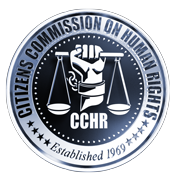Deadly Restraints: Psychiatry’s ‘Therapeutic’ Assault
Introduction
To state the obvious, psychiatric “care” is not supposed to kill patients, and no one expects patients to die in psychiatric hospitals. Yet this is what quietly happens under the watchful eye of psychiatrists every day in psychiatric institutions around the world.
Nine-year-old Randy Steele didn’t feel like taking a bath in the psychiatric facility to which he had been admitted. In the scuffle that ensued Randy vomited and then stopped breathing, while staff forcibly restrained him. After being revived, Randy was quickly transferred to another hospital where he died the next day. Hospital records later showed that Randy had been restrained 25 times in the 28 days prior to his death. Despite the evidence of blood discharging from his nose, mouth, eyes and anus, and bruises on his face and abdomen, no criminal charges were filed. At state legislative hearings, Randy’s mother, Holly, held up her son’s autopsy photos, pleading: “I hope that no other child has to die like this.”
Psychiatric staff forced 13-year-old Canadian Stephanie Jobin (already dosed with five different psychiatric drugs) to lie face down on the floor, shoved a beanbag chair on top of her, sat on the chair to pin her down and held her feet. After struggling for 20 minutes, Stephanie stopped breathing. Her death was ruled an accident.
Eleven-year-old Andrew McClain died of traumatic asphyxia (suffocation) and chest compression four days after being admitted to a Connecticut psychiatric facility. Andrew had disobeyed an instruction from a psychiatric aide to move to another table at breakfast. Two staff members subsequently restrained him, one by lying on top of him in a padded seclusion room.
Restraint “procedures” are the most visible evidence of the barbaric practices that psychiatrists choose to call therapy or treatment. And as these examples clearly show, such psychiatric brutality does not soften, as human compassion would deem appropriate, even for the sake of youth.
Since 1969, the Citizens Commission on Human Rights (CCHR) has investigated and exposed deaths resulting directly from a psychiatrist’s “care.” As one of its first investigations, CCHR documented 100 unexplained deaths in California’s Camarillo and Metropolitan State hospitals. One 36-year-old man was found dead face down in a bed where he had been shackled with leather restraints. A grandmother was found dead in a hospital closet two weeks after the staff informed the family that she was missing.
Working with legislators and media CCHR has helped expose the grisly truth that up to 150 restraint deaths occur without accountability every year in the United States alone. At least thirteen of the deaths over a two-year period were children, some as young as 6 years old.
Steps taken to curb the death toll have had little effect. Despite the passage of restrictive federal regulations in the United States, during the following three years another nine children died of suffocation or cardiac arrest from violent restraint procedures.
In Japan, regulations were passed prohibiting the use of physical restraints on the elderly after the discovery that private psychiatric hospitals were forcibly incarcerating and illegally restraining elderly patients. Still the violence continued. Dr. Masami Houki, head of the Houki psychiatric clinic in Japan, was convicted of manslaughter after he plugged a 31-year-old female patient’s mouth with tissue, then covered it with adhesive, injected her with a tranquilizer, tied her hands and feet, and forced her to lay on the back seat of a car while transferring her to the clinic. She was dead on arrival.
Houki is one of the few psychiatrists—indeed, any psychiatric staff—who has been criminally charged because of deaths resulting from violent restraint procedures, euphemistically called “humane restraint therapy.” Meanwhile, thousands of people of all ages continue to die from such callous, physical assault in psychiatric facilities across the globe.
The reason for this is very simple. “Assault” is by definition an attempt or apparent attempt to inflict injury upon another by using unlawful force, along with the ability to injure that person. “Battery” is defined as any unlawful beating or other wrongful physical violence or constraint inflicted on a human being without his consent.
Psychiatric restraint procedures, and all other psychiatric procedures for that matter, qualify as “assault and battery” in every respect except one; they are lawful. Psychiatry has placed itself above the law, from where it can assault and batter its unfortunate victims with a complete lack of accountability, all in the name of “treatment.”
We invite you to review this report and draw your own conclusions about the danger psychiatry poses, not only to our mental health, but to our very lives.
It is imperative that law enforcement and lawmakers take action to put a stop to these atrocities.
Sincerely,
Jan Eastgate
President, Citizens Commission
on Human Rights International







